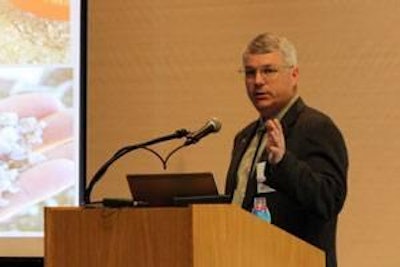
Cost and availability will ultimately determine the adoption of a new or alternative litter material by poultry growers and the poultry industry, according to Dr. Jesse Grimes, North Carolina University, presenting at the Poultry Litter Management Workshop at the 2012 Midwest Poultry Federation Convention in St. Paul, Minn.
As the poultry industry in the United States has grown and expanded, the availability of litter materials has been challenged. Grimes examined all available research completed on poultry litter and bedding since 2002.
Results from twelve different studies were reviewed to determine if a material is a good bedding source. Several factors help determine if a material is a good bedding source, including: absorbency, drying time, whether the material is contaminant-free, its purpose after use as a bedding material, and whether or not it is cost competitive with current materials utilized.
Alternative litter materials for poultry will continue to be researched and evaluated. Local materials and suppliers are going to play a crucial role in the search for alternative bedding materials for the poultry industry. While bird performance will always be a threshold criterion, if the litter is difficult to obtain or not cost competitive with current materials utilized, it will not be used at litter material.

















